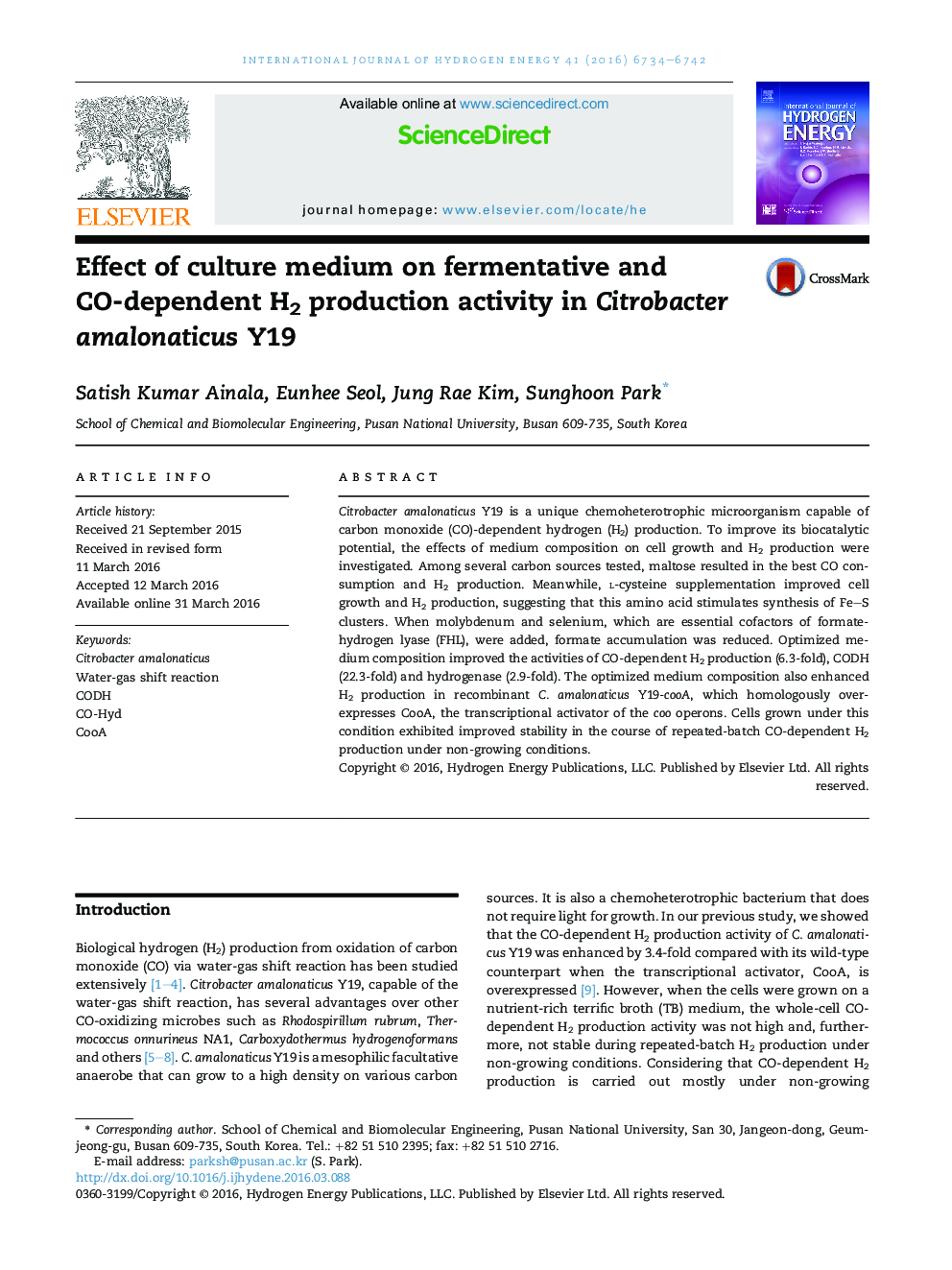| Article ID | Journal | Published Year | Pages | File Type |
|---|---|---|---|---|
| 1270678 | International Journal of Hydrogen Energy | 2016 | 9 Pages |
•Optimized medium enhanced CO-dependent H2 production activity by 6.3-fold.•Improved activity was attributed to enhanced activities of CODH & CO-Hyd.•Recombinant Y19 cooA could further improve COH2 production activity.•Long term stability and reusability by repeated CO exposure were ensured.
Citrobacter amalonaticus Y19 is a unique chemoheterotrophic microorganism capable of carbon monoxide (CO)-dependent hydrogen (H2) production. To improve its biocatalytic potential, the effects of medium composition on cell growth and H2 production were investigated. Among several carbon sources tested, maltose resulted in the best CO consumption and H2 production. Meanwhile, l-cysteine supplementation improved cell growth and H2 production, suggesting that this amino acid stimulates synthesis of FeS clusters. When molybdenum and selenium, which are essential cofactors of formate-hydrogen lyase (FHL), were added, formate accumulation was reduced. Optimized medium composition improved the activities of CO-dependent H2 production (6.3-fold), CODH (22.3-fold) and hydrogenase (2.9-fold). The optimized medium composition also enhanced H2 production in recombinant C. amalonaticus Y19-cooA, which homologously overexpresses CooA, the transcriptional activator of the coo operons. Cells grown under this condition exhibited improved stability in the course of repeated-batch CO-dependent H2 production under non-growing conditions.
